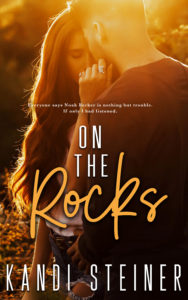When I do my Wrangling the Writer series, I always ask for questions from writers. “What are you struggling with?” I ask them. “What can I do to help you grow?”
Some of the biggest questions fall into the marketing arena, with daily motivation and tips for where to start right behind. But, interestingly enough, I rarely get questions about what I believe is the most important part of writing fiction:
Building three-dimensional characters.
What I mean when I say three-dimensional is making your characters real — giving them substance, heart, flaws, growth. I mean taking this flat, easy, too-obvious character giving them so much depth that they feel like your best friend — or perhaps, you, yourself.
I have so many pieces of advice on how to create characters your readers can not only relate to and understand, but love, too. However, for the purpose of keeping your attention on the internet (which, let’s be honest, means I’ve got about ten minutes if I’m lucky), here’s my top three.
Take Personality Tests for Your Character
I was first bullied into taking The Enneagram Test by my dear friend Staci Hart, who was influenced by Karla Sorensen, who gave an incredible speech on building characters using this tool at Inkers Con.
This is my best piece of advice when it comes to making characters worth reading.
Take the test, find out which number you are, and then read through the types and think about the characters you’re writing. Assigning them an Enneagram number will help you understand not just the positive aspects of who they are (like that they play guitar and love music), but the negative aspects, too — the ones that will grow throughout the book. You’ll think hard about what their biggest fear is, what motivates them, what scares them and what fills up their energy tank.
From there, you can ask yourself why.
For instance, if your character is a 5 on the Enneagram, they have a basic fear of being useless. You can ask yourself why — what happened to them to trigger this fear? And what characteristics in your character might that fear drive? Would they maybe put a lot of pressure on themselves to excel at work? Would being a good mom be the most important thing to them?
And from there, you dive deeper.
I also recommend giving them an astrology sign, and possibly a Myers-Briggs breakdown. Even if you don’t believe in the woo woo, this woo woo shit will help you really think about who your character is — and more importantly, why they are who they are.
Talk to Your Character
Here’s your homework assignment once you’ve taken the Enneagram and done some research on the types: take a walk with your character.
I’m serious. Take your phone along, if you’re afraid of genius striking and not having anything to take notes in, but I highly recommend that if you do take your phone, you use the voice notes section instead of the text notes.
Whether you press record or not, I want you to have a conversation with your main characters. Ask them the questions you might ask someone you were interested in dating, or that you’d love to ask your parents, or that you wish someone would ask you.
Imagine them as a real, physical person walking there beside you. If you ask them a question and they answer it, I want you to then ask them why.
If their favorite movie is Shawshank Redemption, ask them why. If their favorite childhood memory is a day at the lake with their dad, ask them why. If they’re deathly afraid of heights, ask them how they first discovered that.
Dig. Dig deeper. Dig some more.
And by the time you finish your walk, you’ll be ready for my third piece of advice.
Flesh Them Out
I recently spoke at The Writer’s Atelier in Winter Park, FL. It was their 5th Annual Writer’s Brunch that they host to raise money for their organization. I was honored to speak with these talented and hungry writers, and while we were talking about characters, I mentioned my in-depth Character Beat Sheet that I use each time I’m plotting out a story.
You can thank them for this article, because they asked to see it, and it forced me to make it customer-facing appropriate LOL.
I have a lot of other topics on the (seriously stupidly) in-depth sheet that I fill out before plotting, but I tried to pick what I felt was the most important and toss it together for this quick beat sheet to share.
When you’ve walked with your characters and had the conversations to find out a little more about who they are, sit down and fill this out, and then you can use it as a reference as you continue writing.
(Quick note: some of the prompts here are romance-related, because that’s the genre I write in. Feel free to ignore those if it’s not your jam.)
QUICK CHARACTER BEAT SHEET
Name:
Role in story:
Physical description:
Personality, as seen by their friends:
Personality, as seen by them:
Enneagram number:
Astrology sign:
Myers-Briggs Type:
Occupation:
Education background:
Familial background:
Dating background:
Internal conflict in this story:
External conflict in this story:
Habits and mannerisms:
Hobbies:
Where do they feel most like themselves?
Where do they feel most alone?
Who is their person, meaning, who do they lean on when they need help?
What is their biggest fear? (expand on this from the Enneagram)
What is their biggest motivator? (expand on this from the Enneagram)
What is their biggest desire? (expand on this from the Enneagram)
How will they grow throughout this story?
What will always remain the same about them?
How does who they are mix with the person they are falling in love with? What potential issues would they have, and what would they be naturally good at?
There you have it — my top three tid bits for building strong characters.
Have something you’d love to see me write a blog about? Shout out a topic in the comments.






